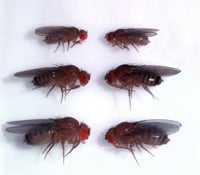Drosophila peripheral nerves, similar structurally to the peripheral nerves of mammals, comprise a central core of motor and sensory axons, surrounded by two layers of glia: an inner glial layer, termed the peripheral glia, and an outer, perineurial glial layer. Although it has been well established that intercellular signalling occurs among these cell types, neither the signalling pathways involved nor the functional effects of these pathways are completely understood. We are using genetic methodology to address these questions. We have found that intercellular signalling controls at least two aspects of peripheral nerve structure or function. First, intercellular signalling controls growth of the perineurial glial layer. At least seven genes participate in this regulation. These genes include Ras and the Ras-GTPase activating protein encoded by the Drosophila orthologue of the gene responsible for the human genetic disease of Neurofibromatosis. Further studies of this pathway are underway. Second, neuron-glia signalling also affects neuronal excitability via regulation of axonal sodium channels. Loss of function mutations in the inebriated (ine)-encoded neurotransmitter transporter increase sodium currents, whereas overexpression of ine reduces sodium currents. Efforts are currently underway to identify and determine the functions of molecules responsible for this regulation.

WEBSITE(S)| PubMed Publication List
Research Areas
Neuron-glia interactions within the Drosophila peripheral nerve, regulation of motor neuron excitability, regulation of ecdysone synthesis

Education
B.S. Biochemistry (1978) Stanford University
Ph.D. Biochemistry (1985) University of California, San Francisco
